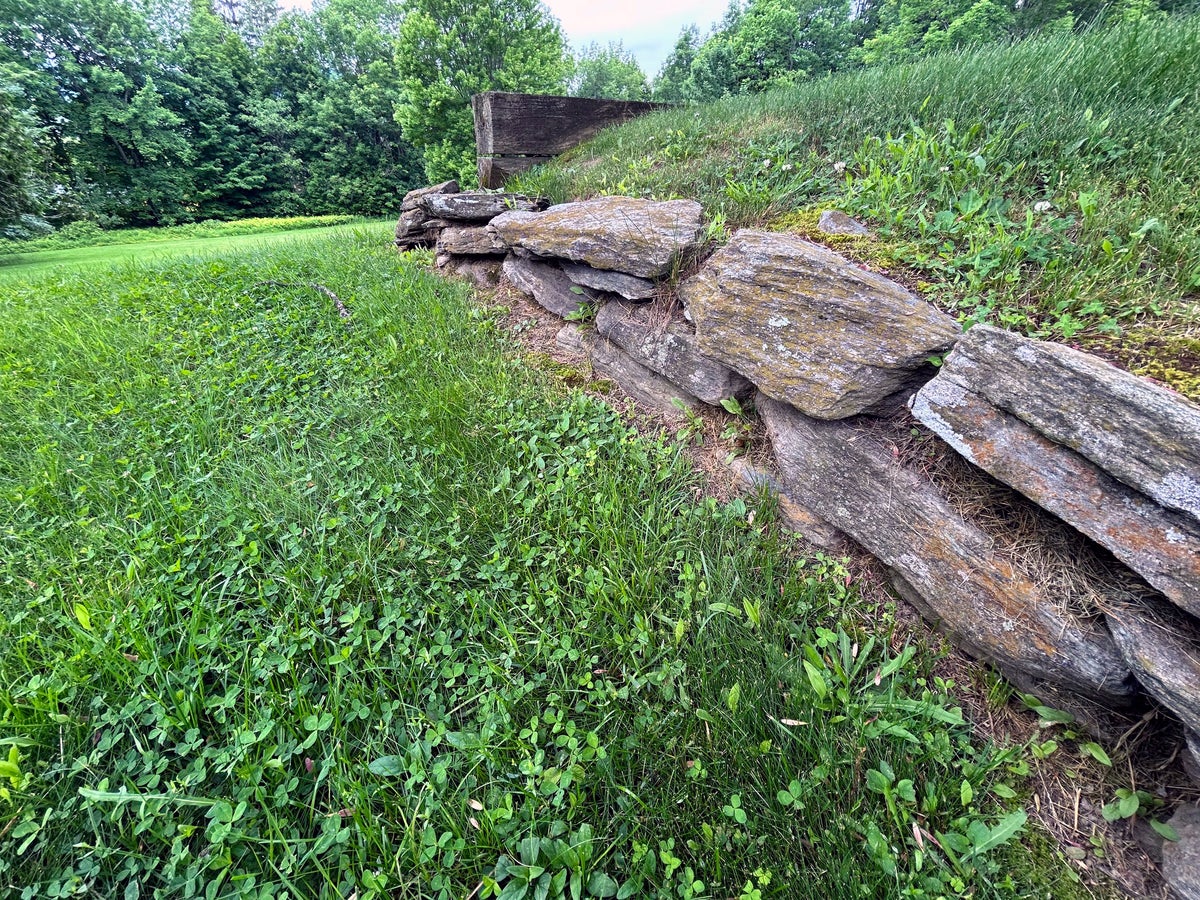
In lawn care, as in politics, an extreme, black-or-white approach can be impractical and turn off the masses. But in the garden, at least, gray can be the perfect shade of green.
Take, for instance, the No Mow May movement. Is it necessary to allow your entire property to turn into a weedy meadow for a whole month? No. But allowing nature to do its thing in a corner of the yard can help the birds and pollinators we depend on.
Should we rip out all our non-native plants and replace them with natives? That would be ideal, but if it isn’t practical, removing invasives and incorporating native plants among your well-behaved exotics will help wildlife and improve sustainability in your garden.
And that brings us to the much-maligned lawn. Fertilizers, pesticides, herbicides and the gas-powered equipment used to maintain common turf grasses contribute to air and groundwater pollution, while the lawn itself provides little ecological value in terms of food and shelter for pollinators and other beneficial insects.
In 2005, NASA satellites found that more than 40 million acres of the continental U.S. are covered in lawn. That’s three times the amount of land used for corn crops. The estimate is still used today.
“An individual, quarter-acre lawn isn’t a big ecological influence, but adding up all those quarter-acres for everyone in the country … the ecological impact could be pretty big,” NASA researcher Cristina Milesi said at the time.
Yet it isn’t likely that everyone reading this will give up their entire lawn. So let’s talk about sustainable ways to care for it.
Mindful lawn care
If your lawn is large, consider replacing part of it with flower beds and borders, or a groundcover like clover. Then, embark on a thoughtful maintenance program.
Don’t fight your climate. Research turf grass types and select ones that thrive best in your region. Aerate the soil and spread seeds in two directions. Water deeply just once, then sprinkle daily to keep seeds moist. Don’t let them dry out even once, or you may have to start over. Sow more seeds every week and keep them lightly moist until the grass fills in densely, which will choke out weeds naturally. When it reaches 3 inches high, you can begin mowing.
For small lawns, use a push mower instead of an exhaust-spewing, gas-powered model. For larger areas, consider a rechargeable electric mower. You’ll reap financial and ecological benefits. Regardless of mower type, keep blades sharpened for clean cuts that heal before insects and diseases move in to take advantage of your convalescing grass.
Most turf varieties thrive best when kept at about 3 inches tall. Learn what's recommended for your species and set your mower height accordingly. Never remove more than one-third of grass height in a single session.
The trifecta of lawn woes -- weeds, insect infestations and diseases -- moves in when lawns aren’t well cared for, so it’s important to improve soil and grass health from the ground up.
Test your soil’s pH. Most turf grasses thrive best in levels between 6.3 and 6.8. If your soil tests below that range, apply lime in the amounts recommended on the package. If the pH is higher than the range, use sulfur to lower it. Never apply either of these amendments (or allow your landscaper to) as a matter of routine. Always test first to determine if there’s a need.
Water. Fertilizer. Pesticides.
A deep root system will sustain the lawn during hot, dry spells, allowing it to find underground water sources from a larger area. Encourage it by providing less frequent but longer watering sessions. Short, daily (or twice daily) sessions will moisten only the soil surface, providing no reason for roots to travel downward in search of moisture. Most grasses need about 1 ½ inches of water per week, including rainfall. Adjust irrigation sessions accordingly.
Understand that cool-season grasses like Kentucky bluegrass, rye and fescues are supposed to go dormant during summer. Warm-season species like Bermuda St. Augustine and Zoysia grasses sleep over the winter. It’s normal for them to turn brown during their off-seasons. Let them.
Personally, I don’t fertilize my grass or use synthetic pesticides in my garden. I maintain a small lawn to define my perennial beds and allow common turf grass weeds to run rampant. Once mowed, it’s all green to me.
If that’s too drastic for you, replace your lawn fertilizer with mulched grass clippings. As they decompose, they’ll provide a free, natural source of nitrogen that, unlike synthetic nitrogen fertilizers, won’t risk contaminating groundwater or running off to fertilize plants at the water table and upsetting the natural plant and wildlife hierarchy.
If you don’t have a mulching mower, remove the bag and mow over the expelled clippings to chop them, then spread them over the lawn instead of sending them to a landfill.
If you still want to use fertilizer, opt for a slow-release product and follow the dosing instructions on the package. Lawns cannot utilize more than the recommended amount, so any excess applied may result in leaching and salt buildup that will alter soil chemistry, adversely affect grass and increase thatch buildup. It’s also a waste of money.
Using insecticides to kill pests also kills beneficial insects that help keep your lawn healthy. Earthworms, ground beetles, ladybugs and praying mantids, among others, eat harmful pests, aerate the soil and aid in the decomposition that nourishes soil. Your lawn needs them.
If you have a particularly stubborn weed problem and find you absolutely must use an herbicide, carefully target only the offending weed and do so on a windless day to avoid overspray.
Finally, and perhaps most importantly, stop chasing perfection. It doesn’t exist.
___
Jessica Damiano writes weekly gardening columns for the AP and publishes the award-winning Weekly Dirt Newsletter. You can sign up here for weekly gardening tips and advice.







